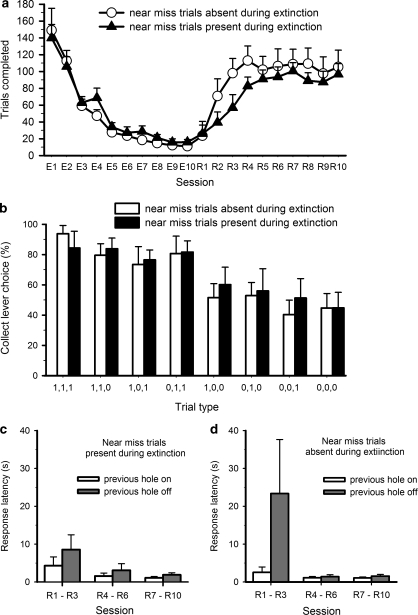Figure 5.
Effect of removing near-miss trials during extinction on both the rate of extinction and subsequent reinstatement of task performance. The presence or absence of near-miss trials did not affect the rate of extinction as indicated by the number of trials completed per session (a). However, rats which had not experienced near-miss trials during extinction were faster to pick up the task again once win trials were rewarded. During this reinstatement phase, near-miss trials were again present for both groups. Despite the difference in the number of trials completed, the proportion of collect responses made across the different trial types was similar in both groups, even within the first three sessions of reinstatement (b). Although rats that did not experience near-miss trials during extinction were initially faster to response in the subsequent hole if the previous hole had set to on (c), both groups of rats were sensitive to the illumination status of the holes by the end of reinstatement (c, d).

